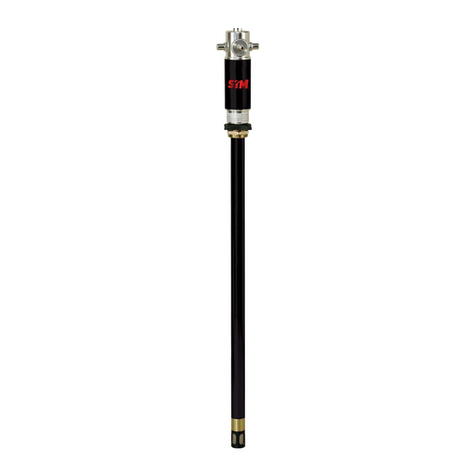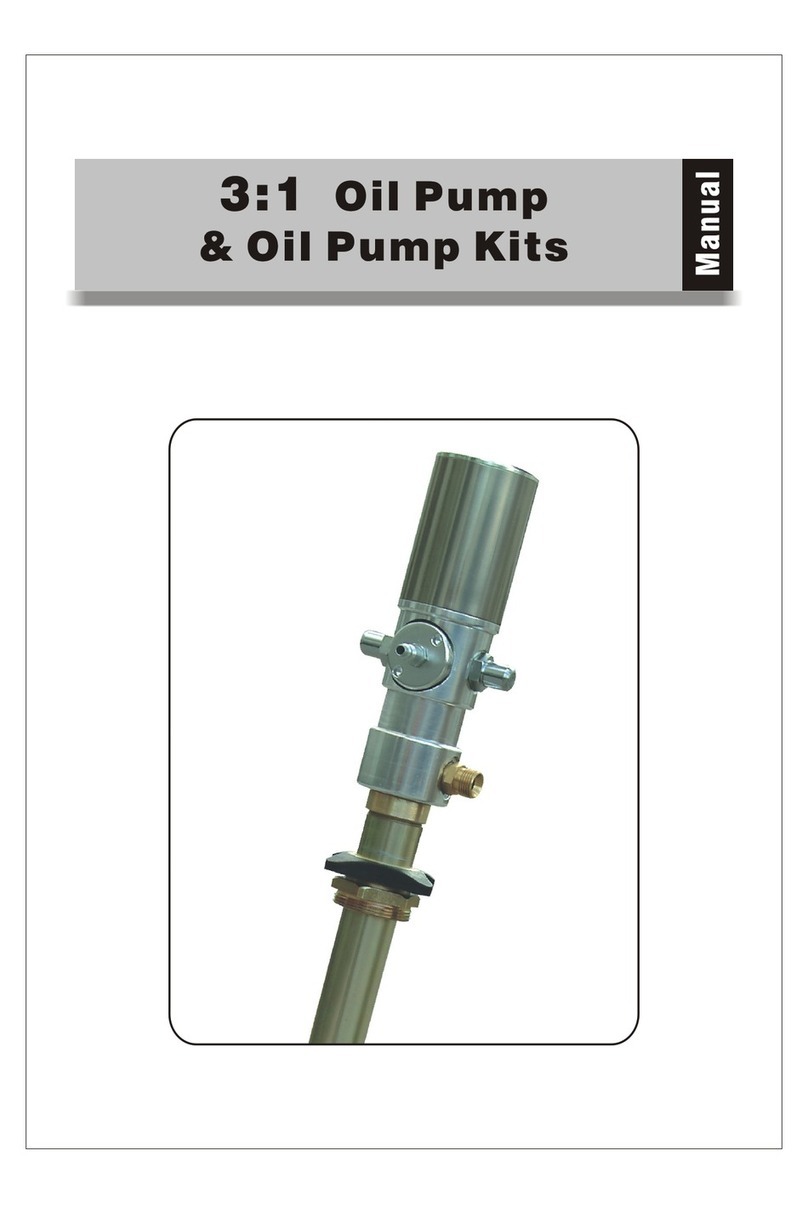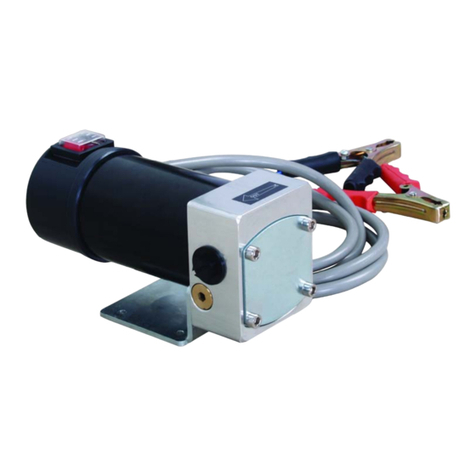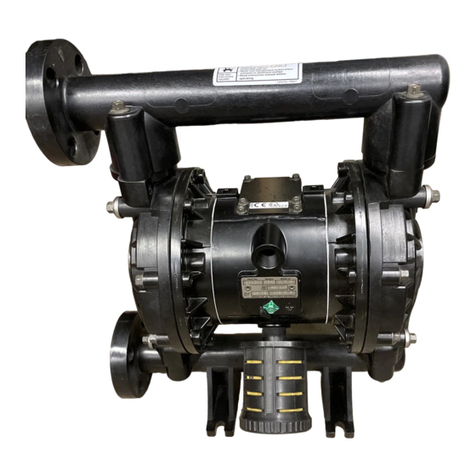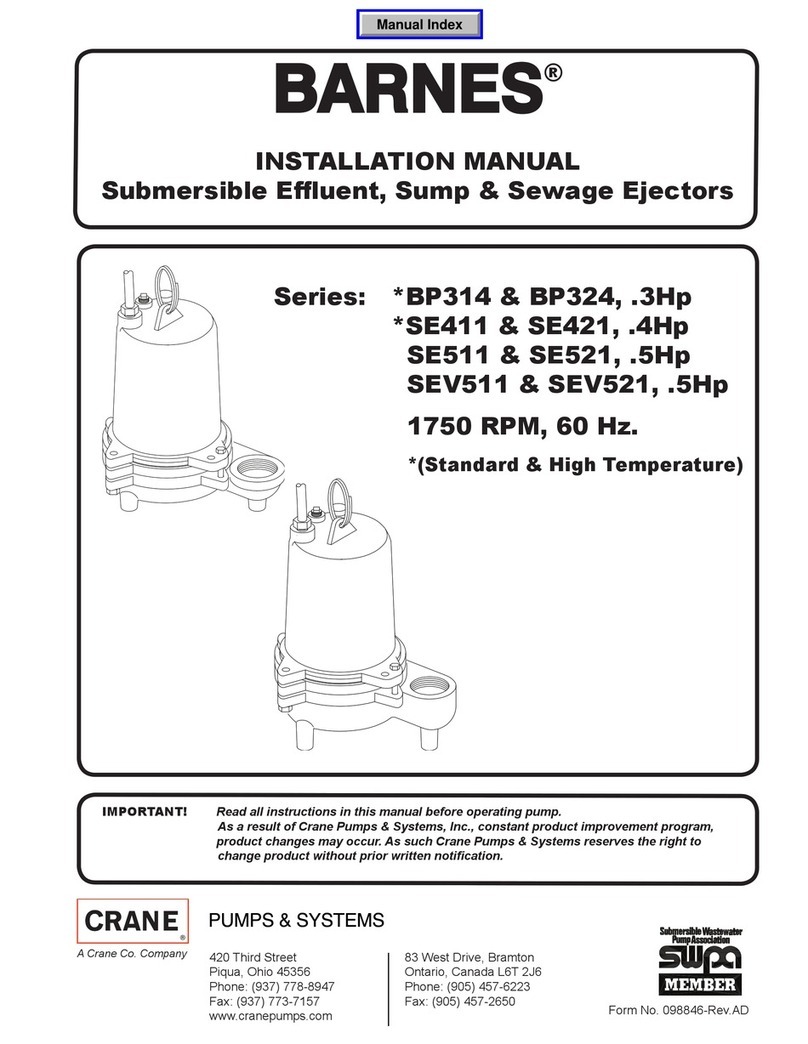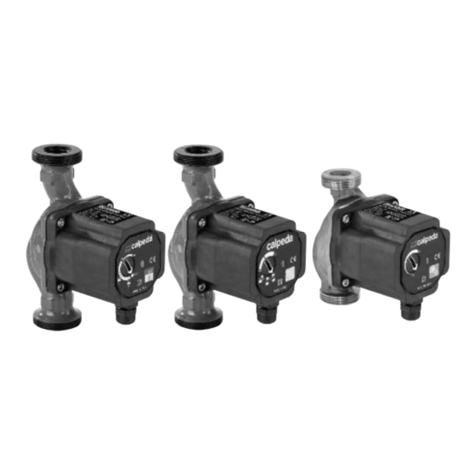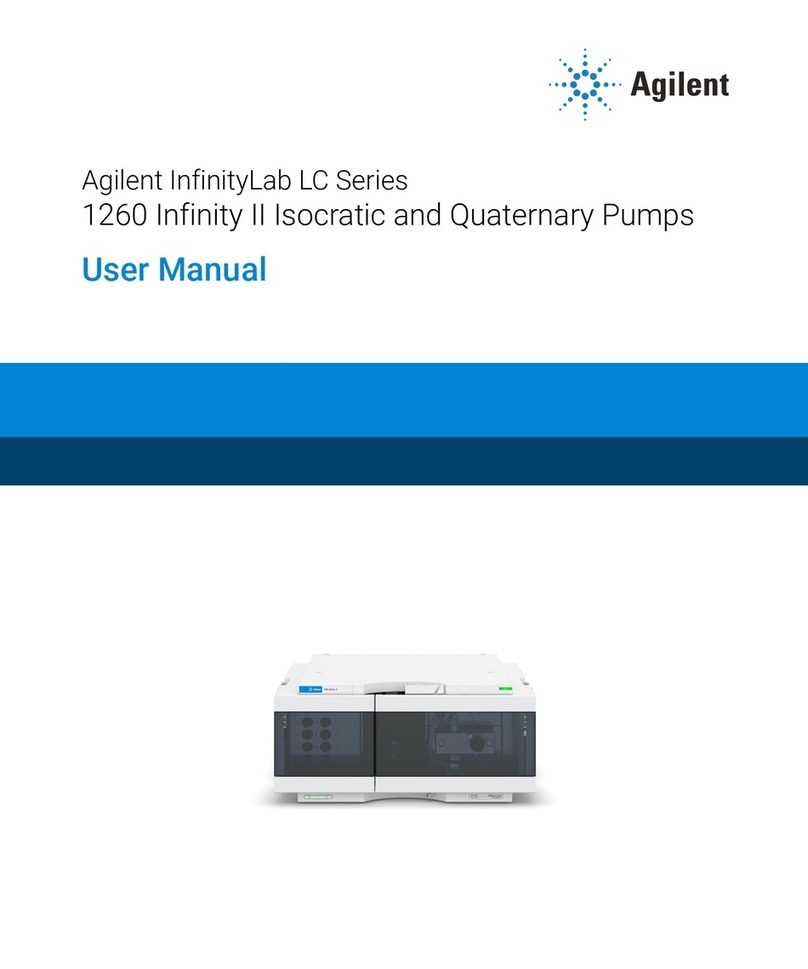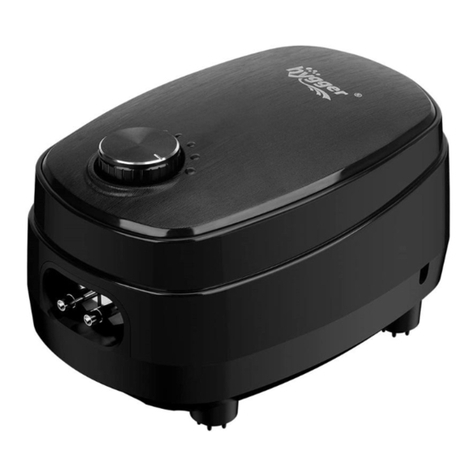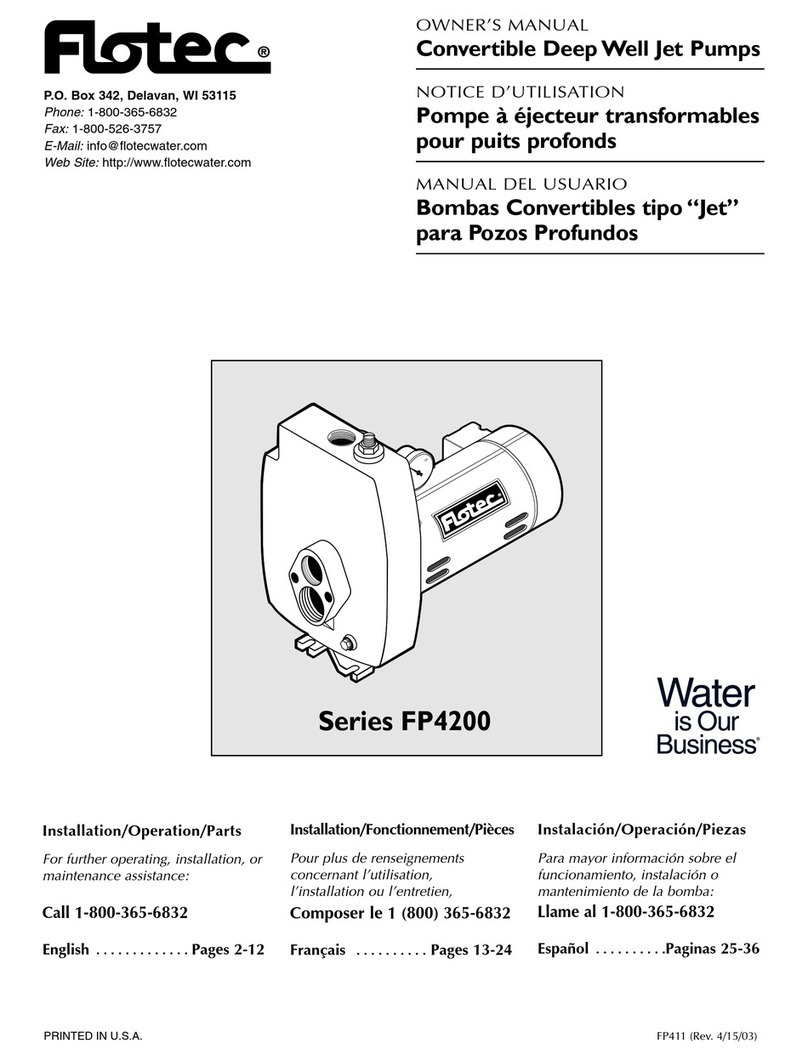STM DITI10305610 User manual

WARNING: Read carefully and understand all
INSTRUCTIONS before operating. Failure to follow the safety
rules and other basic safety precautions may result in serious
personal injury.
INTRODUCTION
The diesel transfer pump kit has been designed for the delivery of fuel from the drum & tanks in any situation.
This manual, apart from giving all necessary information on ordinary maintenance and supporting engineers
in failure detection and repair, should also give all the information’s needed to fully employ the capacity of
the machine, as well as to the user’s needs.
INSTALLATION
Electric connection should be done on a CEI standard socket provided with switch (so it isn’t live when the
connection is done) according to L.46/90 prescriptions.
DRUM PUMP KIT
User’s Manual
DITI10305610
DITI10305611
DITI10305619
DITI10307000
DITI10307207
1 of 7

2 of 7
PRELIMINARY INSPECTIONS
Before the power connection is done, verify the conductors aren’t live and general switches are off.
DISMANTLING AND DISPOSAL PROCEDURE
The metallic parts which the machine is mainly made of will be dismantled and sent to the steel mills. The
fuels in the tanks of the installation will be collected and sent to an authorized disposer. All plastic and
non-degradable material parts will be separately collected and sent to an authorized disposer or recycled.
SAFETY DEVICES
General Switch
It is placed on the motor body and allows the operator to set it on standby in a very short time. Once the
machine is stopped, the whole starting procedure can be repeated.
Harmful Functions
The noise from the machine is below 70 dB (A).
HARMFUL EMISSIONS
Steam emission is so reduced to result irrelevant.
FIRE PREVENTION
In case of fire never use water, but extinguishing powders charged with CO2 cat. A-B-C-D only, employing the
extinguishers placed next to the machine. Combustion of paints and plastic parts may produce toxic
emissions: use the normal precautions to be employed in case of fire (always refer to the security supervisor
of the place of installation).
FOR DC PUMP ONLY
ATTENTION!
1. Extreme operating conditions with working cycles longer than 30 minutes can cause the motor temperature
to rise, thus damaging the motor itself.
2. Each 30-minute working cycle should always be followed by a 30-minute power-off cooling phase.
3. MAXIMUM BY-PASSING TIME: 3 MINUTES.
4. DO NOT RUN DRY OVER 30 SECONDS.
NOTICE: THE VISION IS BUILT PAYING MAXIMUM CARE TO USER’S AND MAINTENANCE
ENGINEER’S SECURITY.
C. TECHNICAL DATA
PUMP
MODEL METER
MODEL Flow Rate ELECTRICAL POWER
Current Voltage(V) Frequency
10307000 Not Available 35/70LPM
9/18GPM DC 12/24 \
10305610 Not Available 56LPM/15GPM DC 12 \
10305611 Not Available 56LPM/15GPM DC 24 \
10305619 Not Available 56LPM/15GPM AC 230 50/60

10307207 Not Available 72LPM/19GPM AC 230 50/60
10305612 15111200 56LPM/15GPM AC 230 50/60
10307201 15111200 72LPM/19GPM AC 230 50/60
10307005 15111200 35/70LPM
9/18GPM DC 12/24 \
10305617 15111200 56LPM/15GPM DC 12 \
10305618 15111200 56LPM/15GPM DC 24 \
10306604 15111200 66LPM/18GPM AC 120 60
10308204 15111200 80LPM/22GPM AC 120 60
10306605 Not Available 66LPM18GPM AC 120 60
10308205 Not Available 90LPM/22GPM AC 120 60
PRECAUTIONS
During Diesel delivery always wear oil resistant and always wash hands with water and soap at the end.
Always cleanat once oil stains to avoid slips and/or pollution.
Use particular care with the zones next to the controls.
When cleaning, and specially when removing dust or waste, always wear suitable clothes, if possible use
aspirators only.Always use suitable clothes or protective devices. Never place hands or limbs under moving
parts.
SYSTEM DESCRIPTION
Functional Description
The diesel transfer system are hydraulic machine tools which feed with a given capacity (volume) of fluid in
the time unit, a collecting tank, sucking the liquid from an open surface feed tank; the allowed suction lift
(geodetic suction lift Hga) is also a specific characteristic of the pump. The system is composed by
complementary equipment, operating as whole to give a complete service:
Diesel pump
2M suction hose with filter
4M delivery hose
Dispensing nozzle
2” quick coupling
MACHINE DESCRIPTION
The diesel transfer unit has been designed and built according to the following standards:
Electric requirements: EN 60204-1 and EN 60529
Mechanical requirements: EN 292-1 and EN 292-2; EN 55081-2, EN 55011C/A
Other requirements 89/392 CEE
ALLOWED AND FORBIDDEN USE
Diesel transfer unit has been designed and built for DIESEL TRANSFER ONLYfrom reservoirs, tanks and
drums.
It is strictly forbidden to employ it to transfer liquids of different kind as gasoline, explosives and
corrosives (or flammable), alimentary liquids.
3 of 7

The machine isn’t designed for employment in the explosive environment.
Operating the pump is forbidden to children and disabled person.
It is forbidden to employ the unit next to flammable liquids (gasoline, alcohol, etc.).
It is forbidden the employment in closed environments in presence of gasoline, LPG, methane fuelled
vehicles.
TRANSPORT AND UNPACKING
Due to its weight and dimensions, the unit can easily be transported by hand. Control that the package is
good conditions and verify that the unit isn’t damaged. Each failure must be noticed in 10 days from receiving
the machine.
For correct unpacking carefully follow these instructions:
1. Place the case on the ground following the indications on the package.
2. Carefully open the case, remove the machine and place it on the ground or on a steady surface.
3. Control that the machine and its accessories aren’t damaged.
4. Firstly, connecting the pump and the flow meter by flange kit (provided in the carton), then install the nozzle
holder to the bottom of the pump. Take out the elbow and screw it on the outlet of the flow meter. For details,
pleaser refer to “M Diagram”
5. Connect the coupling, see Fig. 1. Connecting Coupling 2 with the spout of the drum or tank. Joint Coupling
1 with the inlet of the pump. Install the suction hose on the thread of the Coupling 1. Then joint coupling 1 to
coupling 2, tighten by screwing the screw.
6. Screw the delivery hose on the fitting of the flow meter and of the filling gun.
NOTE: FOR ALL ABOVE CONNETION, SCREWED IT TIGHTLY WITHOUT ANY LEAKAGE!
Fig. 1
USE AND STARTING
STARTING
Once the hoses are sealed, the feeding cable is connected and the filling gun is in rest position, the machine
can be started. After placing the hose into the tank and the gun into the filling hole, start the pump, gradually
release the lever and start Diesel transfer. Once the filling is done release the control of the gun and switch
the pump off. When the pump isn’t in use disconnect it.
FLOW METER
4 of 7

5 of 7
The flow meter shows how many litres of liquid were pumped by the unit. Be aware that this device is not
suitable to measure products for resale.
The mechanical flow meters indicate the partial (resettable) and total (no reset function) of the litres pumped.
Each time the instrument must be reset, turn the knob on the left of the unit until all zeroes are displayed.
Calibration
The meter used in the pumping unit is calibrated at the factory. Calibration is recommended upon initial use,
after disassembly or significant wear. Meter calibration can be easily changed with the procedure hereafter.
The proving container should be at least 50 litres.
Procedure:
Fill container to a know volume
Turn the calibration screw
+Clockwise to increase the number of liters counted
-Counterclockwise to decrease the number of liters counted
WARNINGS
1. The gunlock has been provided to make filling easier. It is forbidden to leave the gun unattended to avoid
overflow.
2. Don’t operate the machine if there is no liquid inside. Don’t start the pump before connecting suction and
delivery hoses.
3. Once the gun is closed switch the motor pump off as soon as possible. THE PUMP HAS TO WORK IN
BY-PASS CONDITION FOR SHORT PERIOD: MAXIMUM 3 MINUTES.
4. In case of current losses the pump should be switched off and the plug disconnected.
5. It is strictly forbidden to use the pump with wet hands, barefooted or dipped in water.
6. In case of blackout switch the pump off and disconnect the plug to avoid unexpected starts with liquid
overflow.
7. When transferring from open-air tanks, we suggest to place the machine as far as possible to avoid
sprays and sudden dips which may cause serious damage.
MAINTENANCE
Each kind of disassembly should always be carried out when the machine is stopped, the plug is
disconnected and after emptying the pump and the flow meter. For a better operation control every three
months that there isn’t any kind of debris in the flow meter filter.
OPERATIONAL PROBLEMS
ACCIDENTS CAUSES REMEDIES
The pump doesn’t work A) Jammed shaft
B) No electric feeding A) Disconnected the plug;
unscrew on the pump,
remove the pump body and
clean it inside. Control that
the shaft is now working

6 of 7
correctly. Reassemble the
pump.
B) Control that the plug is
correctly connected and that
the socket is live.
The pump works doesn’t deliver
liquid. A) The pump sucks air from the
suction hose.
B) Air inside the pump
A) Control the suction hose seal
on the pump. Verify that the
hose is completely immersed
into the liquid and free from
chokes.
B) Control that the filter is clean.
MECHANICAL RISKS
1. Mechanical parts subject to wear
The blades
The bearing
The rotor
These parts should be replaced with original spare parts by qualified personal only or in authorized service
centres.
2. Risks due to extreme temperatures
Remember that a very low temperature can freeze the Diesel inside the pump. This situation can cause
serious damage to the motor pump unit.
3. A very high temperature (about 45℃) may cause the plastic parts in the unit to expand. The unit should
thus be placed in a well-ventilated place and protected from the sun.

7 of 7
DIAGRAM & PRICE LIST
Part No. Component description Quantity Part No. Component
description Quantity
1 Outlet 1 8 O-ring 2
2 Nozzle 1 9 flange 1
3 Bolt M6 2 10 Nut M8 2
4 Nozzle base 1 11 Bolt M8 2
5 Nut M6 2 12 pump 1
6 Mechanical meter
(Optional)1 13 Quick Coupling 1
7 Elbow 1 14 Inlet 1
This manual suits for next models
4
Table of contents
Other STM Water Pump manuals
Popular Water Pump manuals by other brands

CAT Pumps
CAT Pumps 1530 Service manual
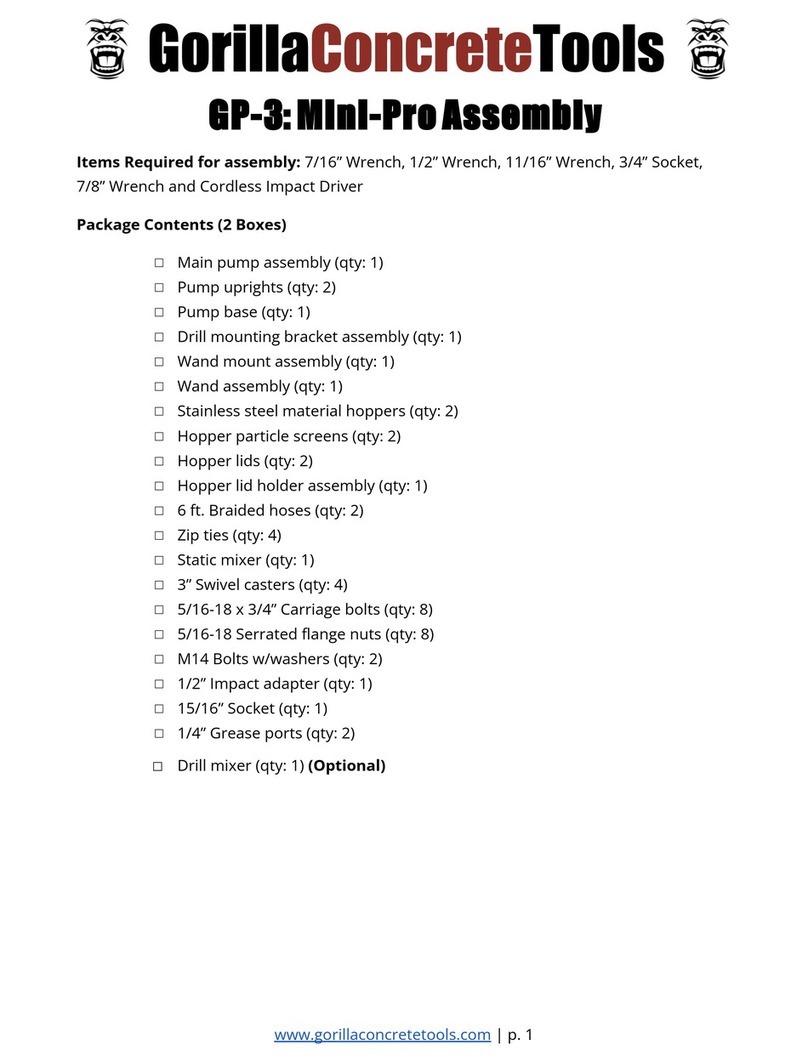
Gorilla Concrete Tools
Gorilla Concrete Tools GP-3 Mini-Pro Assembly
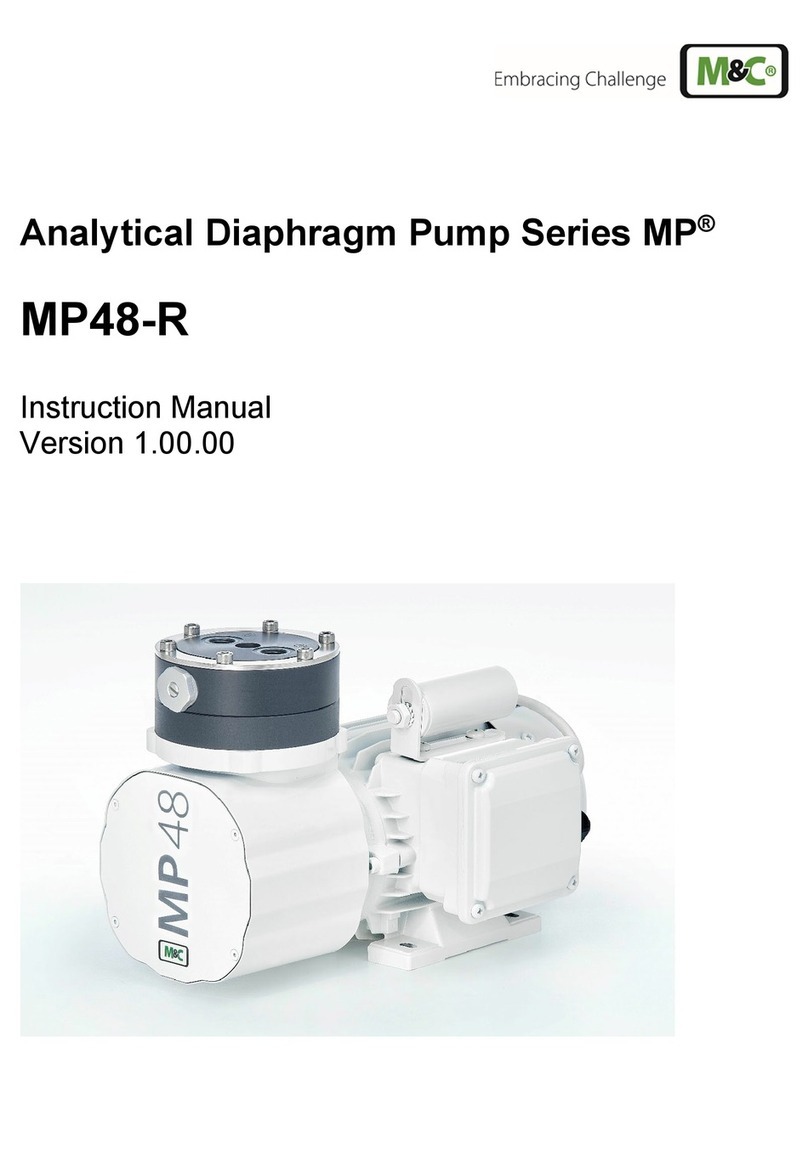
M&C
M&C MP Series instruction manual

Zoeller
Zoeller 105 installation instructions
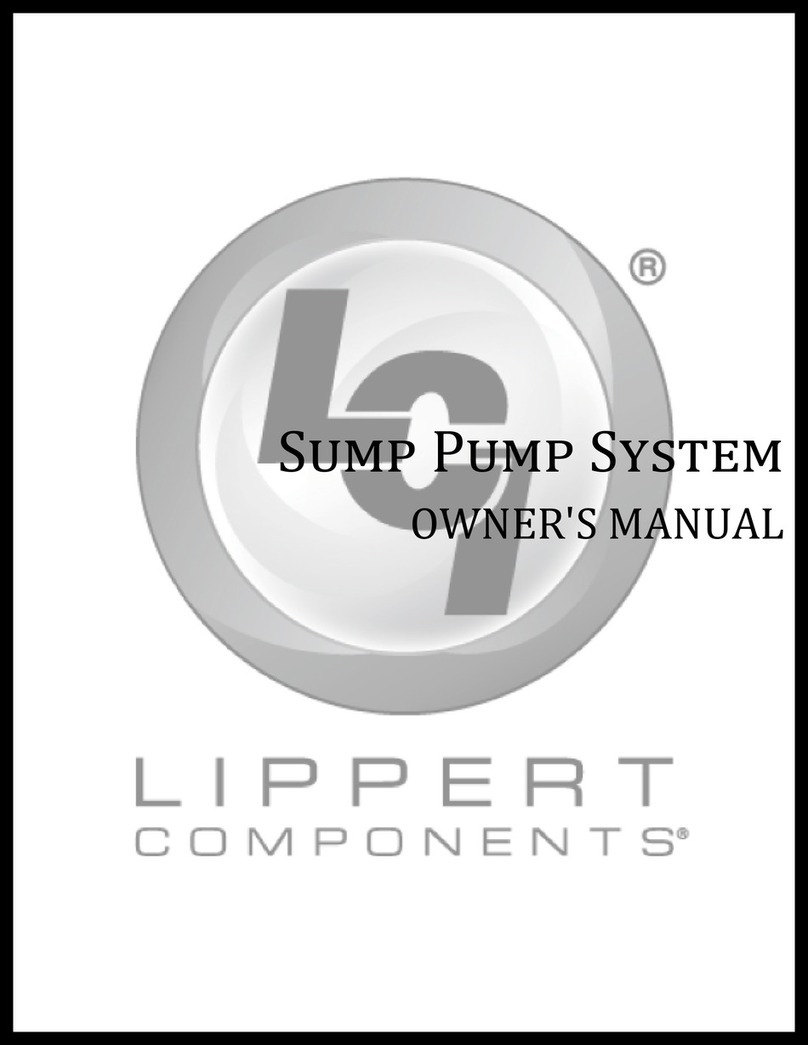
Lippert Components
Lippert Components Duraself DS-600GSP-M owner's manual
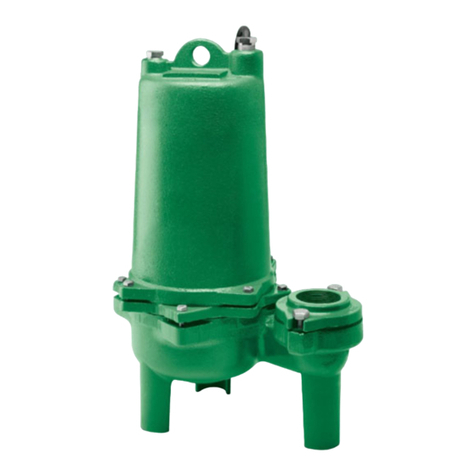
Pentair
Pentair Myers WHR Series Installation and service manual
Silicon Solar
Silicon Solar AquaJet SPB50-801210D user manual
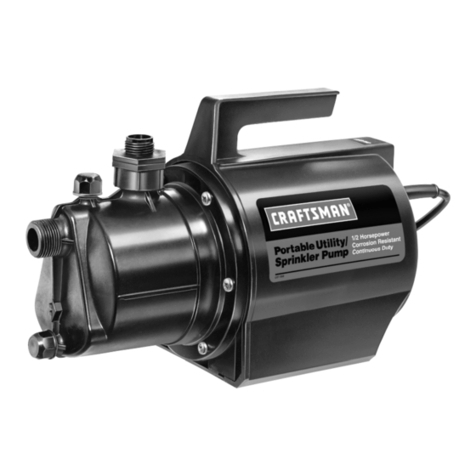
Craftsman
Craftsman 390.260293 owner's manual
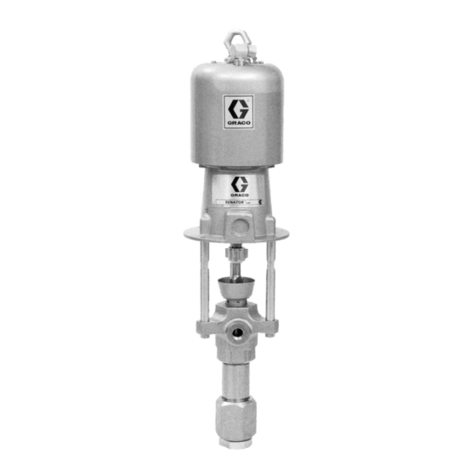
Graco
Graco Dura-Flo A Series Instructions-parts list
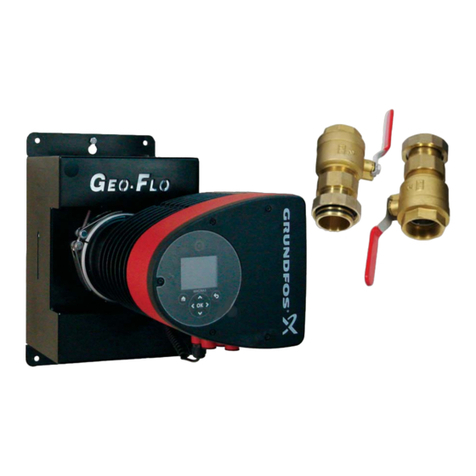
Grundfos
Grundfos Geo-Flo MAGNA3 installation manual

Pentair
Pentair Hydromatic MPC Installation and service manual
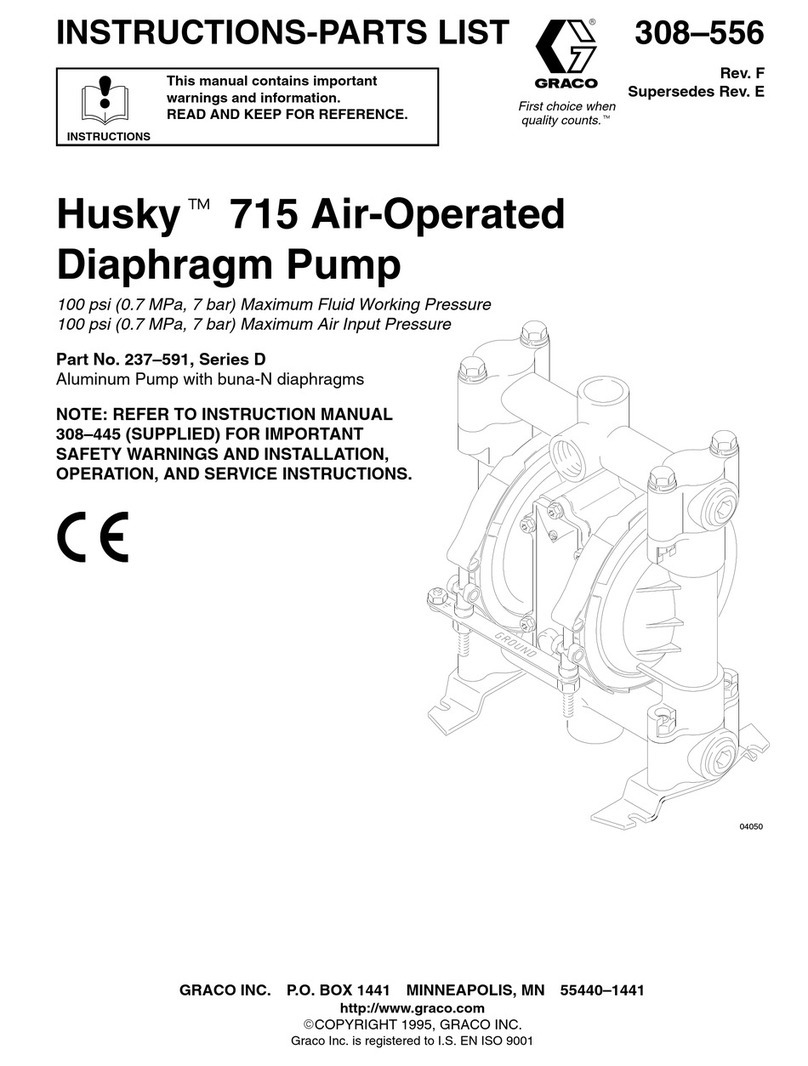
Graco
Graco Husky 715 Instructions-parts list

